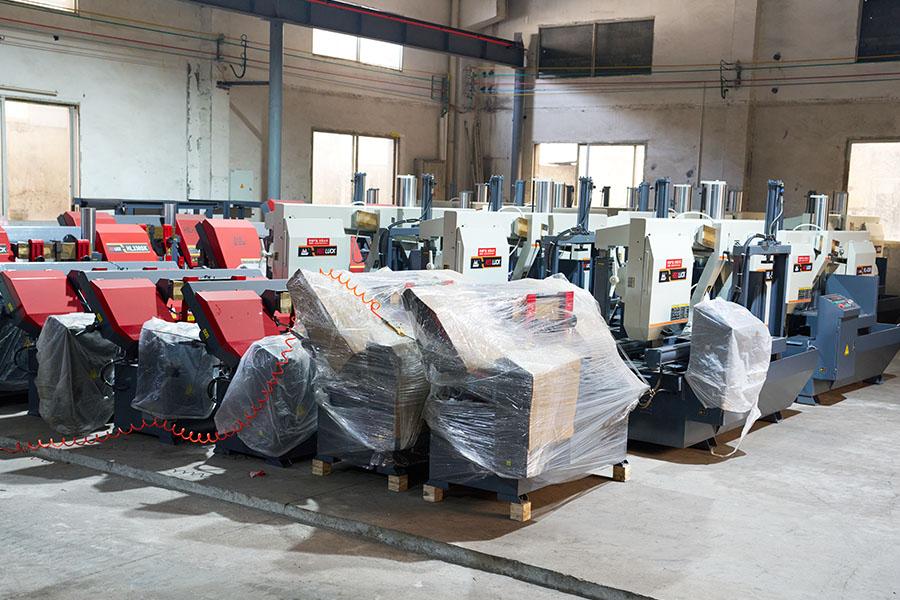CNC Sawing Machine Advancements Streamline Precision Cutting In Manufacturing
The manufacturing industry is constantly evolving to meet the growing demand for accuracy and efficiency. One significant advancement in this sector is the development of the CNC sawing machine, which has played a crucial role in enhancing precision cutting processes. The automatic horizontal band saw, a key component in modern manufacturing, has transformed the way materials are cut, offering improvements in both speed and precision.

CNC (Computer Numerical Control) sawing machines are designed to provide automated cutting solutions with small manual intervention. These machines are engineered to work with a variety of materials, including metals, plastics, and wood, offering a versatile solution for manufacturers. The integration of CNC technology allows operators to program intricate cutting paths with great precision, ensuring that each cut is executed consistently and accurately. The ability to program these machines with specific cutting instructions also reduces the risk of human error, making the process more reliable and efficient.
The automatic horizontal band saw is another innovation that has contributed significantly to the advancements in sawing technology. This machine uses a continuous band of teeth to cut through materials, which allows for smoother cuts and better control over the material. The horizontal design of the saw ensures that the material is held securely during the cutting process, which results in a more stable operation and reduced vibration. As a result, the automatic horizontal band saw is ideal for cutting through thicker or more robust materials that would be difficult for traditional saws to handle.
One of the key advantages of CNC sawing machines is their ability to improve production efficiency. These machines can operate continuously, reducing downtime between cuts and allowing for higher throughput in a shorter amount of time. This is particularly beneficial in industries that require high volumes of precision cuts, such as metal fabrication, construction, and automotive manufacturing. The automatic horizontal band saw, with its fast and precise cutting ability, ensures that these industries can maintain a steady pace of production while less the need for manual labor.
In addition to improving efficiency, CNC sawing machines and automatic horizontal band saws also contribute to cost savings. By automating the cutting process, manufacturers can reduce the need for skilled labor, lowering labor costs and less the potential for costly errors. The ability to cut materials with such precision also reduces waste, as the cuts are made with little to no excess material left behind. This not only saves on raw materials but also helps manufacturers adhere to sustainability goals by reducing waste and energy consumption.
Another notable benefit of CNC sawing machines is their ability to offer repeatable results. Once a cutting program is set, the machine can repeat the same operation with consistent results, ensuring uniformity in each part produced. This is particularly valuable in industries that require mass production of identical parts, such as aerospace and electronics. The automatic horizontal band saw, with its precision control, ensures that each cut is made to the exact specifications required, contributing to the overall quality of the finished product.
The versatility of CNC sawing machines and automatic horizontal band saws also cannot be overlooked. These machines are capable of cutting a wide range of materials and can be easily adapted to suit different production needs. Whether it’s cutting thick steel for industrial machinery or slicing through delicate components for electronics, these machines provide the flexibility needed to meet various manufacturing demands.
CNC sawing machines and automatic horizontal band saws have revolutionized the manufacturing industry by streamlining the precision cutting process. These advancements have not only improved production speed and efficiency but have also provided manufacturers with greater flexibility and cost savings. As industries continue to grow and evolve, the role of these machines in shaping the future of manufacturing will only become more significant, further establishing their value in modern production environments.

 English
English 中文简体
中文简体 русский
русский

